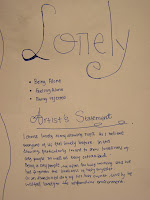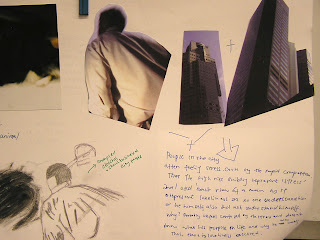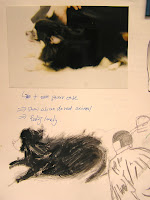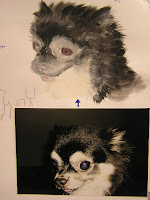


Above: "Batman's Ears"
Below: "Log Cake"







 Also the idea that bare feet represent the honest soul of a pitiful human being.
Also the idea that bare feet represent the honest soul of a pitiful human being. In her development she started to experiment with putting the feet floating above the city...
In her development she started to experiment with putting the feet floating above the city...

 The crab looking on at one person isolated from a crowd of others.
The crab looking on at one person isolated from a crowd of others.